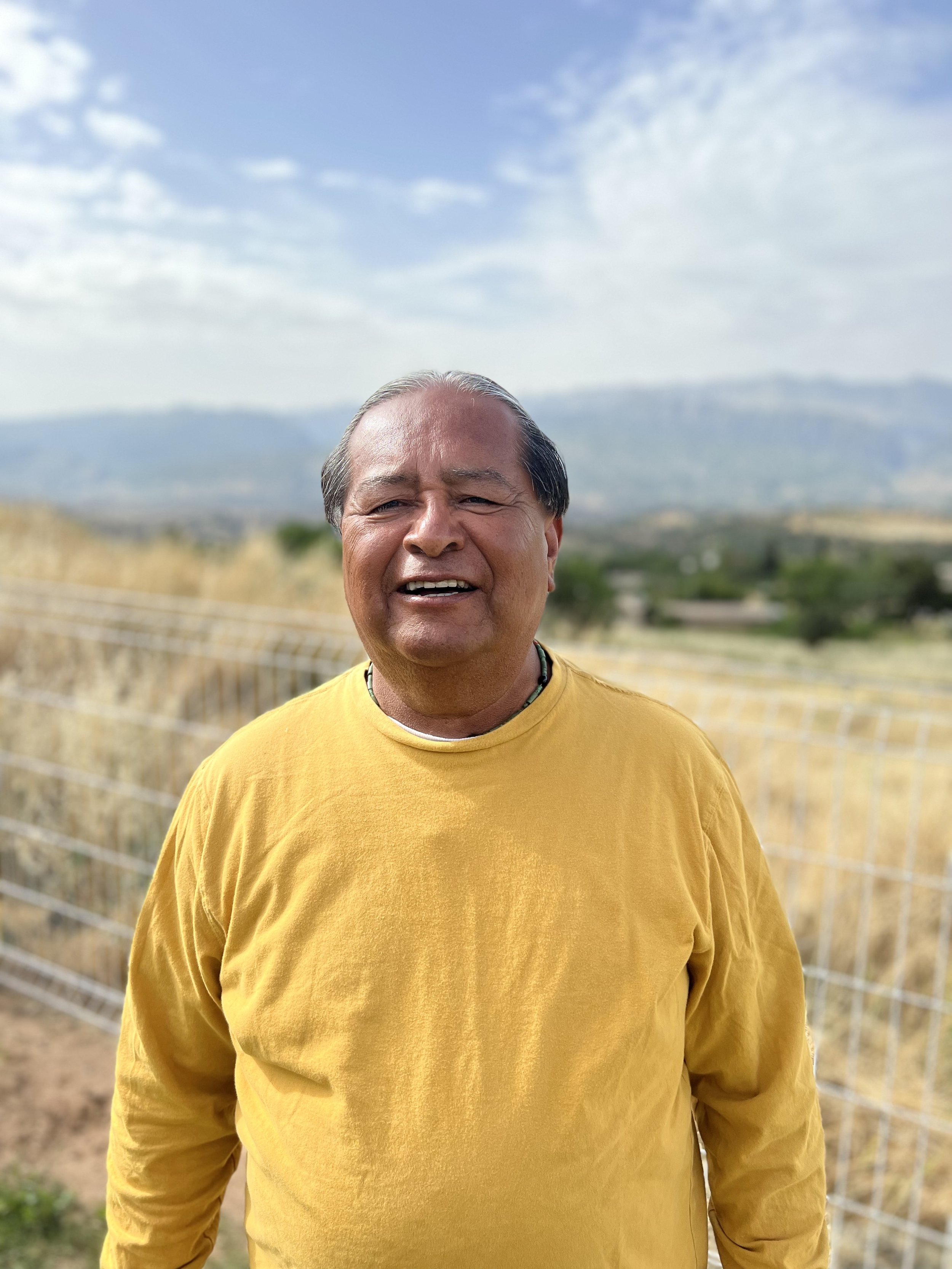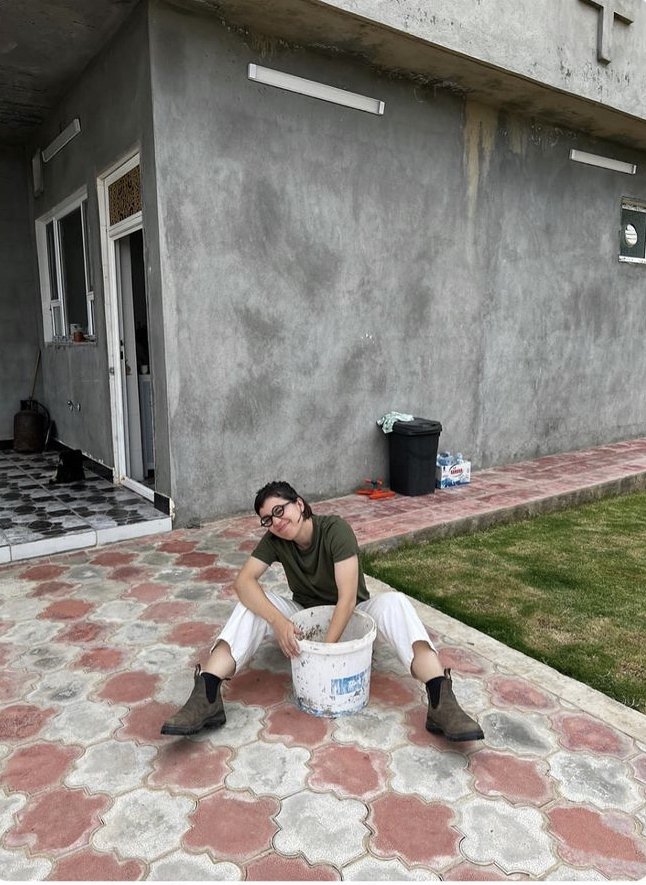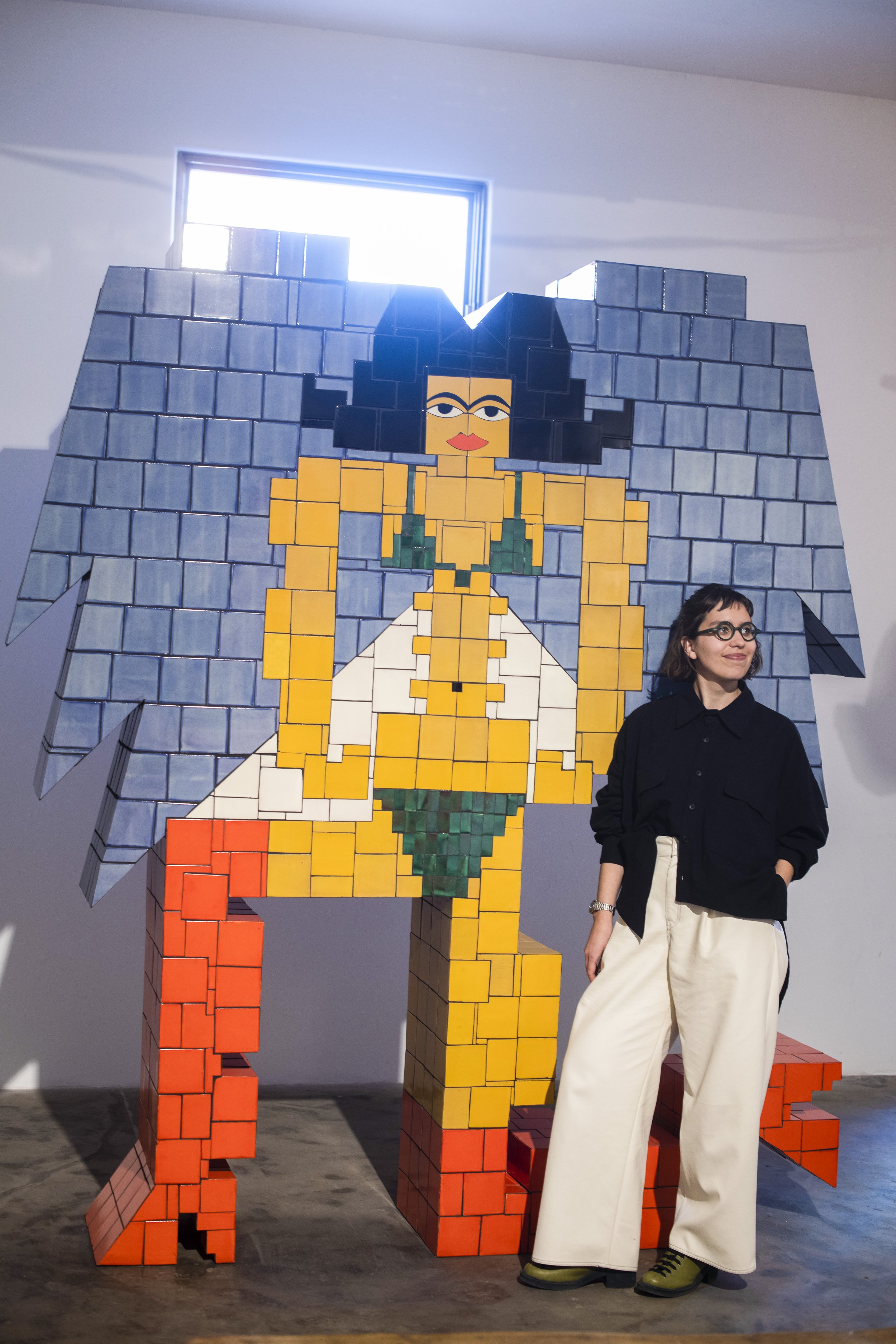From Iraq to the US, ‘native soil’ unites indigenous communities
An initiative born of Esther Elia’s cross-cultural background and curiosity for tradition, Native Soil brings together Native American and Assyrian potters in the villages of northern Iraq.
Yasmeen Altaji | June 20, 2023
Between craggy rock and lush greenery typical of the landscape of many northern Iraqi villages, Esther Elia noticed the telltale signs of the presence of clay-rich soil — its unique consistency and visible evidence of moisture retention — almost camouflaged with the rest of the ground.
“I was able to recognize that Iraq is covered in clay — at least that part of Iraq,” she told The Word. “And everywhere we went, I was like, ‘That's clay, that's clay.’ It's everywhere.”
She had developed a keen eye for clay deposits as an art student in New Mexico, harvesting clay with Native American instructors. She noticed the deposits on her first trip to Iraq in 2022, which would lay the groundwork for Native Soil, an initiative launched this month bringing together indigenous potters from the US and Iraq in a first-of-its-kind exchange of native cultural knowledge.
Elia, a California-born Assyrian American interdisciplinary artist, maintains young roots in the American southwest, home of a rich Native American culture. Her work — as a student at the University of New Mexico and beyond — focuses on the Assyrian diaspora and the maintenance and creation of culture within it, she told The Word.
“I got back [to New Mexico] and I had just been thinking about that,” Elia said of the clay deposits she found on her first trip in April last year. “I talked to Mr. Cruz and asked if he would ever consider going to Iraq to hold clay harvesting workshops.”
Clarence Cruz, an assistant professor of ceramics at the University of New Mexico and member of the native Ohkay Owingeh tribe, taught Elia in his class on Pueblo pottery. He said his goal as an instructor involves encouraging his students to integrate elements of their own cultural backgrounds with the work they do in his class and “bring it back into your community.”
“She proposed this idea during one of her studio shows,” Cruz told The Word. “I said, ‘Well, why not?”
Made possible by a crowdfunding effort spearheaded by Sarah Bennett, a friend of Elia’s with a background in fundraising, the six-day program began early this month in the village of Bebedeh, home to a small but dense Assyrian population, and ended with a pop-up workshop in Ankawa. Bennett and Elia had together made an appeal via GoFundMe for 20,000 to cover travel, food and lodging and emergency expenses. Over the course of a few months, they raised just more than that goal.
“Esther is amazing at bringing a vision to life and thought to paper,” Bennett told The Word. “This project explored commonalities between two indigenous communities from opposite sides of the world.”
Elia poses with her work at her Master of Fine Arts thesis show in 2023. She said studying in New Mexico with indigenous instructors heavily influenced her work. (Photo courtesy of Esther Elia)
In the village of Bebedeh (Bebadi), about 200 km northeast of Erbil, workshops led groups of participants — ranging in number from about 15 to 30 novices and seasoned artists alike — through discussions on Native American and Assyrian traditions and hands-on creation of pieces including small vessels and relic-inspired items like the Assyrian rose. Sessions were led by Elia, Cruz and Jared Tso, a member of the Diné tribe and a peer of Elia’s in the university’s graduate program, as well as local artisan potters, including an Assyrian elder by the name of Isho and renowned sculptor Nenous Thabet.
Thabet, a Mosul-native artist who met Esther at an Assyrian art showcase in Arizona and now teaches at an art institute in Nineveh, said the initiative is vital to Assyrian artistic tradition.
“People can learn about Assyrian art and traditions,” Thabet told The Word. “There are natives from everywhere learning how to work with clay.”
Native parallels and ancient tradition
Excavations of ancient regal sites dating back to the eighth century BCE have revealed that pottery comprises millenia-spanning tradition for Assyrians, a distinct ethnic group native to parts of present day Iraq, Iran, Turkey and Syria. Elia wondered whether that tradition had stopped short of reaching her generation.
With Native Soil, Elia sought not only an exchange of knowledge between two peoples, but a glimpse into what modern versions of ancient traditions looked like. She found that many of those traditions remain relatively unchanged, grounded in low-technology crafting methods and unmodernized mainly due to what she calls a phenomenon of mobility — the need for Assyrian families to migrate due to displacement, persecution or loss of livelihood and adjusting their crafting methods as needed.
Esther, Cruz and participants convene at a clay harvesting site in Bebedeh. (Photo/Native Soil via Instagram)
As a student at the University of New Mexico, Elia was exposed to a culture of Native American traditional pottery under the guidance of Cruz and in the midst of a community of Native American students and faculty. According to the New Mexico Indian Affairs Department, the state is home to approximately 228,400 Native Americans belonging to 23 tribes, making up just over 10% of the state’s population. Elia said her education in New Mexico heavily influenced her interest in pottery and indigenous art.
“I had the real privilege of working with a lot of Native American professors,” she told The Word. “I think that direct access made it so that I was showing my work to a community that understood the Assyrian experience in a way that I didn't expect.”
Differences in technique between the two traditions were obvious, Elia said: Today’s Assyrians throw clay using a wheel, while Native American tradition calls for hand-building ceramics. Native American tradition utilizes intricate decoration, while Assyrian pottery does less so. But these contrasts are overpowered by similarities in processes, rituals and use of materials. Cruz described a sense of familiarity in the landscape in parts of northern Iraq including Bebedeh and Erbil, characterized by greenery, mountains and an “abundance of clay”.
“The culture, the landscape was just like here in New Mexico,” Cruz said.
Shibla BetShmuel, a Bebedeh-native, U.S.-based poet, worked as an interpreter on the Native Soil trip. He said novice participants posed questions to Elia and her colleagues as though they hoped to continue the work on their own after the conclusion of the program — something he attributes to the nature of the medium itself.
“They realize how easy it is to have access to that soil, to that clay, and then how easy it is to process that and…actually create something out of it,” BetShmuel told The Word. “Every human being can create something out of clay. You're only limited by your imagination.”
“I was showing my work to a community that understood the Assyrian experience in a way that I didn’t expect.”
In soil, the shadow of political unrest
For Elia and Cruz, an irony exists in using land as a medium as members of indigenous communities.
In parts of Iraq’s Kurdistan region, local Assyrian residents have reported attempted “land grabs” as political unrest continues to push Assyrians from the region. Elia described seeing airstrikes fall on distant villages from her position in Bebedeh, an occurrence all the more frequent since Turkey ramped up its operations against suspected Kurdistan Workers Party (PKK) positions in Iraq, driving civilians — including central Assyrian populations — into the crossfire and out of the region. In the United States, Native Americans face their own histories of oppression and displacement at the hands of government actors.
“I think you can't help but think about it,” Elia said of regional politics. “We're in a place that people are struggling to hold on to their land.”
It is a struggle shared with indigenous populations in the U.S., Cruz said.
“The atrocities and the mutilation and the genocide that has happened within [Iraq] plays pretty much to what we've experienced [in the U.S.] as indigenous people within our own land…being pushed and moved out,” he said.
A future of cross-cultural knowledge





1) Clarence Cruz in Bebedeh. 2) Ninous Thabet leads a workshop. 3) Esther Elia. 4) A mug by Jared Tso. 5) Handmade wares. (Photos courtesy of Native Soil)
Elia hopes to continue the project on both Assyrian and Native American soils.
“This is a total experiment,” Elia said. “The initial idea was that we would bring indigenous people from across the world together, united around clay.”
She said the second part of that idea would be a “reverse exchange” bringing Assyrians to Native American land.
“We're going to try and make that happen, and hopefully do this exchange several times,” she said. “Our land is sacred and precious and is available and has gifts for us.”


